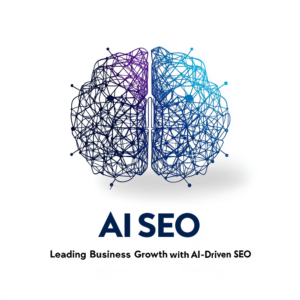Title:
In the ever-changing landscape of digital marketing, search engine optimization (SEO) remains a cornerstone for driving organic traffic and enhancing online visibility. Though, as search engine results pages (SERPs) evolve, with user intent becoming increasingly nuanced, the strategies that once delivered consistent results may no longer suffice. Enter artificial intelligence (AI), a transformative tool that is reshaping how SEO professionals approach keyword optimization and content creation. By harnessing AI’s capabilities, businesses can better understand and adapt to the shifting patterns of user intent, ultimately aligning their SEO strategies with the demands of modern search behavior.In this article, we will explore how AI can be utilized to decode SERP intent trends, allowing marketers to stay one step ahead in a competitive landscape, and ensuring that their content not only reaches the target audience but resonates deeply with their actual search intent. Join us as we delve into the innovative intersection of AI and SEO, and discover actionable insights to optimize your digital strategy in an era defined by rapid change.
Table of Contents
- Understanding SERP intent Trends in the Age of AI
- How AI Tools Can Analyze and Predict Search Intent Changes
- Crafting Content Strategies to Align with Evolving User Intent
- Measuring the Impact of AI-Driven SEO Adjustments on Traffic and Engagement
- Future Outlook
Understanding SERP Intent Trends in the Age of AI
In the digital landscape, understanding user intent is paramount. With the advent of AI, search engines have become more adept at interpreting the nuances of search queries. This shift towards semantic search emphasizes the need for SEO professionals to analyze SERP trends closely.By focusing on the underlying motives behind search queries, marketers can uncover various categories of search intent, such as:
- Informational: users seeking knowledge or answers to questions.
- Navigational: Users looking for specific websites or services.
- Transactional: Users ready to make a purchase or complete a conversion.
AI tools can analyze serps on a broader scale, identifying shifts in user behavior and content performance. By leveraging machine learning algorithms, businesses can dynamically adjust their content strategies to align with evolving search patterns.Here’s a simplified table outlining key strategies:
| Strategy | Description |
|---|---|
| Content Optimization | Utilizing AI to refine keyword strategies based on emerging user queries. |
| Real-time Adaptation | Employing algorithms to adjust meta tags and content based on SERP fluctuations. |
| User Engagement Analytics | Analyzing engagement metrics to tailor content formats (video, infographics). |
How AI Tools Can Analyze and Predict Search Intent Changes
AI tools are revolutionizing the way we understand search intent by offering advanced techniques to analyze user behavior and predict shifts in preferences. by utilizing machine learning algorithms and natural language processing, these tools can identify patterns and trends in search queries that indicate changes in user motivations. For instance, they can discern whether searches for a specific keyword are leaning towards informational, navigational, or transactional intent. This insight helps marketers refine their content strategies and align their SEO efforts with the evolving needs of their audience.
Moreover, the capability of AI to process large datasets enables it to provide actionable recommendations. By integrating data from various sources, including social media trends and real-time search behavior, AI can generate valuable insights that inform content creation and optimization. Key features include:
- Predictive Analytics: Forecasting future shifts in user intent based on past data.
- Sentiment Analysis: Gauging user sentiment towards topics to tailor content accordingly.
- Competitive Analysis: Benchmarking against competitors to identify gaps and opportunities.
With these enhancements, businesses can stay ahead of changing SERP dynamics, ensuring that their content remains relevant and engaging, ultimately driving more organic traffic and conversions.
Crafting Content Strategies to Align with evolving User Intent
as user intent continues to shift in the digital landscape, adapting content strategies is essential for maintaining relevance and visibility. To effectively align with these evolving intentions, it’s imperative to analyze user behavior data and leverage AI-driven insights. Consider the following methods:
- Keyword Analysis: Utilize AI tools to uncover latent semantic keywords that resonate with search trends.
- User Persona Advancement: Create detailed user personas based on demographic and psychographic factors to better understand the motivations behind search queries.
- Content Mapping: align your existing content inventory with identified user intents, creating a roadmap for future topics that cater to emerging trends.
Moreover, continuous monitoring of SERP features can provide invaluable information about changing user preferences. Incorporate a dynamic feedback loop into your content creation process, allowing for adaptability and speedy adjustments.Key metrics to track include:
| Metric | Importance |
|---|---|
| Click-Through Rate (CTR) | Indicates how well your content captures user attention. |
| Time on Page | Reflects content engagement and relevance. |
| bounce Rate | Signals whether users find what they’re looking for. |
By embracing these strategies and tracking the right metrics, content creators can craft effective marketing narratives that resonate with users’ evolving needs and improve SEO performance.
Measuring the Impact of AI-Driven SEO Adjustments on Traffic and Engagement
Understanding the effectiveness of AI-driven SEO adjustments requires a multi-faceted approach to measurement. To gauge the impact on both traffic and engagement, employing a variety of key performance indicators (KPIs) is essential. Important metrics to consider include:
- Organic Traffic Growth: Analyzing changes in the number of visitors arriving through search engines can highlight the direct effects of SEO modifications.
- User Engagement Metrics: tracking metrics such as average session duration, bounce rate, and pages per session can provide insight into user behavior and interest levels.
- Conversion Rates: Assessing how well the traffic converts into leads or sales will reflect the quality and relevance of the traffic generated.
By integrating AI tools, businesses can utilize detailed analytics to interpret these KPIs more effectively. Employing AI tools allows for deeper insights into how user intent evolves and how well each SEO adjustment aligns with those shifts. A side-by-side comparison of pre- and post-adjustment traffic and engagement levels can be beneficial. Below is a sample layout presenting hypothetical data from an AI-driven SEO strategy:
| metric | Before Adjustments | After Adjustments |
|---|---|---|
| Organic Traffic | 1,500 | 2,300 |
| Average Session Duration | 1:30 | 2:10 |
| Bounce Rate | 60% | 45% |
| conversion Rate | 3% | 5% |
Future Outlook
As we continue to navigate the ever-evolving landscape of search engine results pages (SERPs), the fusion of artificial intelligence and SEO has never been more critical. By harnessing AI’s capabilities, businesses can not only anticipate and respond to shifting user intent but also refine their strategies to improve visibility and engagement.
The key takeaway is clear: staying ahead in the digital realm requires a proactive approach to SEO that embraces technological advancements. As patterns of search intent evolve, so too must our strategies for content creation and optimization. AI tools can empower marketers to gain deeper insights into user behavior, predict trends, and tailor their approach effectively.
As you embark on this journey to redefine your SEO strategy, remember that the ultimate goal is to provide value to your audience. By creating relevant, high-quality content that aligns with user intent, you not only enhance your website’s visibility but also build trust and loyalty with your audience.
In a world where change is the only constant, leveraging AI for SEO adaptation is not just an option—it’s a necessity. Stay informed, be agile, and let data-driven insights guide your path to success in the ever-competitive digital landscape. Thank you for joining us on this exploration of how to leverage AI for SEO, and we wish you all the best as you implement these strategies in your own practices. Happy optimizing!


